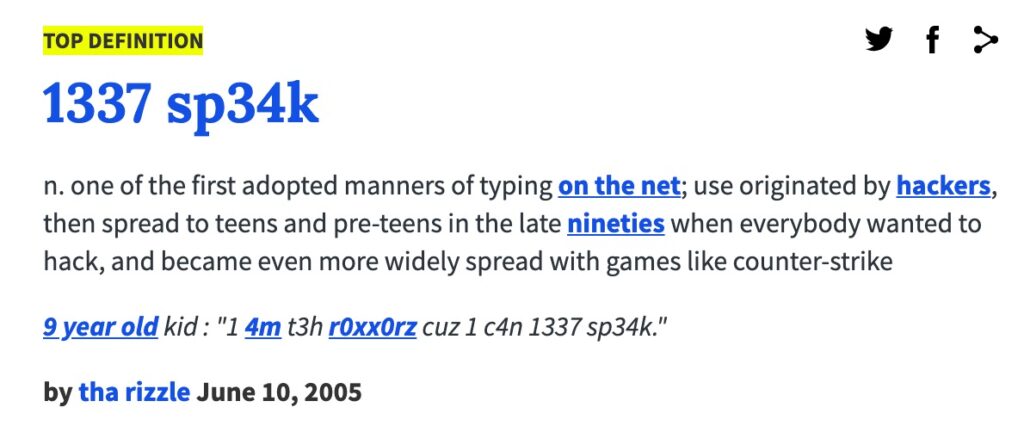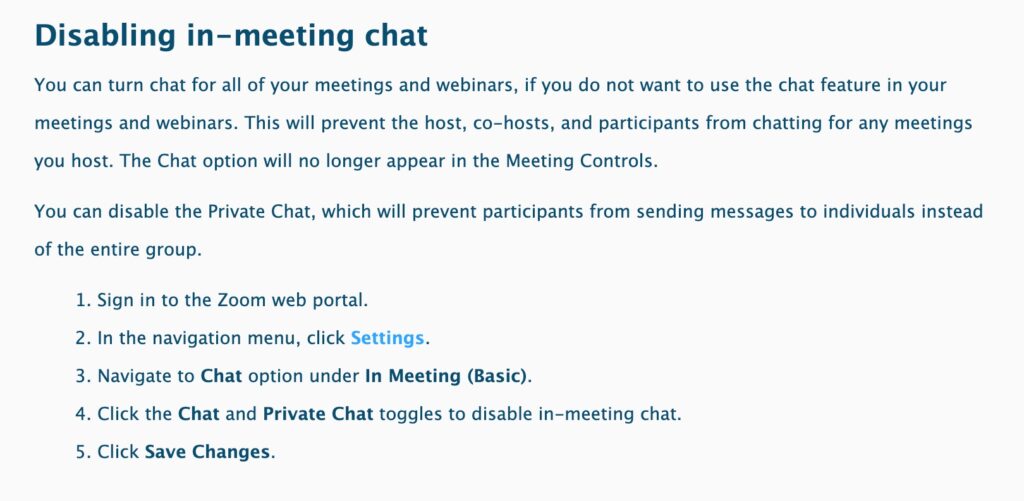When is a “lol” not a “lol”? Would a “ftw” hit as hard by any other name?
Two things:
- Shakespeare’s now spinning in his grave like a turbine, powering most of greater Stratford;
- That’s absolutely fine with us.
Language evolves. It grows and bends and twists and curls back on itself like you wouldn’t believe. And nowhere is this more evident than online.
If you, like us, are “an old”, this may be alarming.
You may, depending on your geological age, remember being instructed never to end your sentences with a preposition. Or you might have learned the correct forms of address for a business letter or a job application, or memorized when to use “that” versus “which”, or bemoan how, like, “like” appears in like, every sentence you’ve heard in like, forever.
Here’s the thing: all these rules or norms are correct, and all of them are out-dated.
The internet changed everything, and it’s here to stay.
The more people began to have to type, the more that entering characters on a computer keyboard or virtual phone keyboard changed person-to-person communication. In large part, that’s because people’s brains think faster than they can type. So the internet caused language to evolve in ways that reduced the number of characters in words (looking at y’all, flickr, Razr, and TikTok) and reduced the number of words in sentences. The internet opened up entire worlds full of shiny things, which added a dimension of excitability and wanting to see all the things in a way that made determiners such as “a”, “an” and “the” much less enticing.
Why? Because internet.
Plus, back in ye day, you had bandwidth constraints, so rather than pay to send multiple texts, you tried to squish the whole thing into one. Remember when tweets could only be 144 characters long?
(The internet also brought us 133t $p34k, but the less said about that the better.)
The other thing about talking online is that when you’re communicating via screen, you can’t see each other’s faces. So historically, to try to minimize being misunderstood, emojis leapt onto the scene (originally typed out using punctuation marks), and each different online space developed its own norms for communication. Norms, different than actual grammar rules, pertain to acceptable and expected language use. For instance, you expect very different communications norms for commenting a collaborative Google Doc, than you do commenting a Facebook post.
And now think of just some of the different online spaces where we communicate:
- Commenting collaborative Google Docs
- Asking a question in the chat box during a videoconference meeting
- Asking a question during a livestream event
- Facebook Groups, Pages & Posts
- Tweets
- Instagram posts & comments & comments on Stories (oy)
- Fan fiction forums
- Texts and SMS
- Ravelry knit-a-long forums
- Gmail’s new poking functionality where you just choose a canned response and move on
- Gif reaction threads (double oy)
- Blogposts on such fine fine blogs as this
- Commenting on blogposts such as this one
And therein lies the issue.
All this means that we’re going to have to help students learn different norms for navigating online spaces.
Now, this can be confusing for us as educators, because half the time we ourselves are learning the norms of a space.
People in their thirties discussing TikTok: pic.twitter.com/qFYi7BDaFi
— Lindsay Theisen (@lindsaytheis) December 31, 2019
But for better or worse, knowing how to communicate online — respectfully, clearly and well — is a skill that isn’t going away anytime soon. It’s a 21st Century professional skill.
Let’s tackle two very, very big online communications tasks: videoconferencing, and commenting.
Let’s start with the comments.
Don’t read the comments.
It’s long been an accepted anthropology maxim that health and happiness depend on never ever reading the comments section. But what if that wasn’t true?
We encourage students to blog as part of reflection. We encourage students to blog updates to their PLPs, to document their research work, and as contributions to group work. And part of that is encouraging them to comment each others’ blogposts.
But that’s a pretty wide-ranging assignment.
Commenting the work of a colleague or peer is very different from leaving a comment on Uncle Joe’s Facebook post, or leaving a comment on an “influencer’s” YouTube video. But you can break it down into two overlapping realms: audience and platform.
Who’s in the room?
When we leave comments for peers and colleagues, it’s just as if we’re in the classroom. A blogpost or a collaborative Google Doc is a piece of writing shared by someone you’re in a professional relationship with. If learning is your profession (so to speak), then both educators and students are your colleagues. There’s an informality to commenting — you rarely begin a blog comment with a formal salutation, for instance — but that informality doesn’t extend to internet acronyms or emojis, unless it does.
👋
If you have created a space where you have talked about:
- emojis;
- how they are generally interpreted;
- how they can be interpreted and misinterpreted (please note that article will likely be out of date six weeks from now, because internet)
- what you all as a community will agree on as a “lexicon” of emojis
Then emojis may be perfectly acceptable in comments. But! It’s important to note that you all can’t assume that anyone outside your learning community will agree on your emoji definitions. Leave them out of comments in general?
Again, who are you leaving the comment for, and where.
Here are some good prompts for scaffolding a discussion of how to comment each other’s work:
- Do you know each other in real life? How have you spoken with this person face-to-face in a similar learning situation?
- What kind of a learner are you? How does that factor into what kind of feedback you find most valuable?
- Do you have anything to add to our comments policy?
Ah, yes. The Comments Policy.
We have found, through six years on this here blog, that it’s helpful to have an official comments policy. It can be fairly simple (“Be kind. No swears or hate speech. You have to sign in. Management reserves the right to follow up on comments at its discretion”) or more detailed, but having a document at hand that spells out both the expectations and consequences is invaluable.
“I don’t know what to say”
Here are a few commenting prompts to get you started:
- One Thing: one thing you liked about the post, one thing that made you wonder, and one thing that made you want to know more. “I liked how you cited your sources. I did wonder whether the math is correct on those demographics. I’d be interested in hearing more about the school’s plans for handling traffic in the new circle, though.”
- Yes And: add a new piece of information to the post. “I loved this post about community radio! Did you know: there’s a new community radio station being built one town over. I’m doing my Passion Project on it!”
- One Wish: If you could change anything about the situation you describe, [panda conservation, alien invasion, water filtration], what would you change?
But don’t take our word for it…
Los Angeles-based educator Linda Yollis sat down with her students, and they explain what the parts of a good comment can look like, along with additional prompts and demonstrations!

Am I muted? I’m muted.
…I’m not muted? Oh, ^%#$%#$.
"No, you have to hit the camera icon. Hit the camera icon. The caerma icon. The camera. Do you see the camera?" pic.twitter.com/la6X6riTeq
— Maureen Johnson (@maureenjohnson) September 19, 2020
After this pandemic’s over, let’s all take a six-month break from Zoom meetings of any kind. Six months, minimum. Face-to-face meetings only.
But until then, let’s talk about scaffolding communication norms for videoconferencing!
We’ve all, at this point, heard apocryphal stories of Zoom meetings dissolving into utter chaos for one reason or another. Some of those reasons will be entirely out of your control. Perhaps a student is minding siblings in the background, or needs to be monitoring a stock pot while y’all debate the socioeconomic pressures exerted on the 1850 trial of “Bristol Bill” (Vermont history, anyone?) or the bandwidth bonks, or any number of other chaotic forces intervene.
Setting those types of things aside, you likely approached the arena of meeting via Zoom with your classroom norms in hand, and those may or may not have been sufficient for keeping your sessions organized.
Now, in general, humans learn early how to take turns. We learn how not to talk over one another. And then technology comes along with a shiny thing and our tiny monkey brains get overwhelmed and we (briefly) forget everything and have to start over.
Again, take it back to your classroom norms.
Post them somewhere prominent — maybe have them up and shared on your screen when everyone else arrives.
This is standard operating procedure at this point for online conferences. When attendees arrive, conference organizers go over the Code of Conduct and take questions on it so that everyone knows. Clarity is kindness. And in this case, you’re prepping your students in a ritual that is becoming and will become more commonplace in the future. Well done!
Hey, let’s talk about the chat box.
*removes lid of box labeled Chat, mouthes ‘oh no’ as multiple evils fly out*
As an organization that hosts monthly online events, part of our planning process involves who, specifically, will be responsible for monitoring the chat box. Chat, in videoconferencing, generally has three functions:
- To solicit written responses to a question posed by whoever’s speaking on Zoom;
- For attendees to pose questions to the speaker on Zoom without a spoken interruption;
- For attendees to communicate with each other during the course of the Zoom activity.
In general, when we assign someone to monitor chat, it’s to pay the most attention to that second function. Attendees — your students included — always have thought-provoking questions that can add to the discussion. Plus, that first function’s a doozy: you can take attendance, or measure engagement, or crowd-source ideas for the next section of the activity.
That’s the good bit about chat.
The more challenging aspect of the chat box comes from, by and large, that third aspect. Don’t get us wrong: it can absolutely go well, such as when a student requests clarification and help and another student answers that request right there in the chat, thus confirming that they both now are on task and ready to tackle the activity.
However.
What happens when the chat gets clogged with conversations that are off-topic, or worse yet, entirely derailing? It’s one thing to blog about your alien conspiracy theories, and quite another to begin expounding on them in the chat box of the 3rd period algebra Zoom.
Here are some strategies you can employ:
- Decide to stop then and there and focus on the side conversation. Perhaps it’s actually adding in some way to the main conversation. Perhaps it’s important enough to step in and talk to the participants involved. You know your students and your learning community best.
- Have a norm that specifies how chat should and shouldn’t be used, and draw attention to that norm. Put the norms back up on screen if you need.
- Turn off chat.
Yep, we said it.
This is, in fact, a lot.
It’s so much that indeed, if you feel like your life would be easier if you didn’t have chat around until you have all your norms in a row, no one will blame you. You can absolutely turn off chat in Zoom.
The key, though, is to turn it back on once you have the additional support you need to make it productive, whether that’s additional personnel, or revised norms, or a revised norms discussion, or remediation with the students that need more support. These instructions will work just as well at turning chat back on. Because at the end of the day, students are going to need to know how to conduct themselves in this particular online setting.
Is it KIND? You know the drill.
Your students are amazing. They’re funny and loud and smart and creative and perplexing. They’re opinionated and strong.
And you? You’re even more amazing, because they look to you for guidance and support. And before you all even got on devices, before you logged in for the very first time to your Google Classroom, you all sat down and talked. You got to know them. You did some identity exercises.
As you built your tiny community of learners, you set some classroom norms. As a community, you talked about the ways you each wanted to be treated, and codified them. You came up with a restorative plan for when things went wrong.
And we know you’re doing your level best to create a welcoming, inclusive and supportive learning environment for your students.
The late great Ned Kirsch, longtime educator and Vermont superintendent, used to insist that digital citizenship is just citizenship, but online.
And he was right.
The way we treat each other online — the way we believe we *should* treat each other online — reflects the way we treat each other offline. Even when things get awful and we’re all frayed to a worn nub by the mere thought of one more Zoom meeting.
Boiled down to one guiding ethos:
Is what you’re writing, in chat or as a comment to a blogpost, in that email requesting a project update, or that post to a forum announcing you may have found an error in a pattern, is it kind?
Scottish comedian Craig Ferguson unpacks it here. Before you say anything, in person or online, ask yourself:
- Does this need to be said?
- Does it need to be said… by me?
- And does it need to be said by me… right now?
Additionally — and this is relevant — perhaps the most powerful phrases in any language but especially English and especially online, are:
- “Please.”
- “Thank you.”
- “If I’m understanding you correctly…”
and
- “I’m sorry.”
All of which carry just as much weight online as they do face-to-face. Because no matter online or off, we all need to learn how to be kind, and reach out to one another. But that’s a topic for another blogpost…





I thank you for the valuable info on this great subject and look forward to more great posts. Thanks a lot for enjoying this beauty article with me. I am appreciating it very much! Looking forward to another great article. Good luck to the author! All the best!